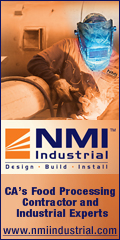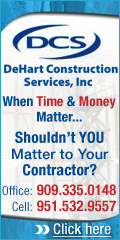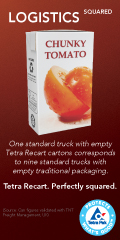
| Archives/Subscribe | www.clfp.com | Contact Us | December 4, 2012 |
Interpreting the IRS's New Rules on Tangible Property
by Michael Ricioli and Dan Nutley, Partners, Food Processing & Agriculture Practice, Moss Adams LLP The IRS recently issued new regulations for the capitalization and expensing of costs incurred to acquire, produce, repair, or improve real and personal property. And although they’re officially temporary, these new rules—the culmination of an almost eight-year project—apply to tax years beginning on or after January 1, 2012. The original focus of the new regulations considered how to determine whether expenditures are deductible repairs or capital improvements, but that quickly expanded in scope as the IRS dug into the issues. The resulting regulations are much broader, and they’re particularly significant to the food and agriculture industry. In that light, let’s examine four key aspects of the new regulations and their potential impact on food processors, growers, and distributors. Materials and Supplies What are materials and supplies? This seems like a simple question, but until these new regulations came out, there wasn’t a definition in the tax law. For tax purposes, materials and supplies are now defined as any of the following: A component acquired to maintain, repair, or improve a unit of tangible property that is not acquired as part of any single unit of property (for example, spare and replacement parts). Fuel, lubricants, water, and similar items that are reasonably expected to be consumed within 12 months. A unit of property that has an economic life of 12 months or less after use begins. A unit of property that has an acquisition cost of $100 or less. If you’ve been using a definition different from the one above, you should spend time examining how this change may impact you. The records you keep dictate how you should account for materials and supplies. In general, for incidental materials and supplies, where no records are kept, you can expense the purchases when the cost is paid or incurred. For non-incidental materials and supplies, where records are kept or the supplies are inventoried, you deduct the cost when the materials or supplies are used or consumed. For example: If a company purchased $5,000 worth of small tools during the year and each tool cost less than $100 and the company doesn’t take inventory of its small tools, then those small tools meet the definition of incidental materials and supplies. Therefore, the company can expense the tools when purchased. Repairs or Improvements? This has been a controversial issue, because the cost of a repair can be treated as a deduction in the tax year the repair is made, which generally is more attractive for the taxpayer. The cost of an improvement, meanwhile, must be capitalized and depreciated over the life of the asset—up to 39 years for a nonfarm building. The new regulations add clarity, stating that an upgrade expenditure will generally be considered an improvement if it results in the unit of property’s betterment, restoration, or adaption to a new or different use. Unit of property is the term given to the property being repaired. It’s important to note that the regulations break down a building into multiple units of property: the building structure (walls, floor, ceiling, etc.) and specified building systems (HVAC, plumbing, electrical, escalators, elevators, fire protection and alarm systems, security systems, and gas distribution systems). The table below defines betterment, restoration, and adaption. Routine Maintenance Safe Harbor The regulations provide a safe harbor regarding routine maintenance to nonbuilding property, allowing qualifying costs to be expensed rather than capitalized. To qualify for the safe harbor, the taxpayer must—at the time the property is placed in service—expect that future costs related to keeping the asset in its ordinary operating condition will be incurred, and maintenance will be performed more than once during the predetermined life of the property. Applicable costs include those related to inspecting, cleaning, and testing the unit of property as well as replacing parts with comparable, readily available parts. When determining if your costs meet the routine maintenance safe harbor requirements, consider whether they’re recurring in nature as determined by industry practice, manufacturer’s recommendations, personal experience, or their treatment in your applicable financial statements. For example: A food processor uses a container to hold chemicals. The container has an established life of 12 years; however, its lining will last only three years and comprises 60 percent of the physical structure. The food processor purchased the container in 2012 and expects to replace the lining in 2015. Although the lining is a substantial part of the container, its repair is expected to be made more than once during the life of the property in order to keep the container in operating condition. Therefore the routine maintenance safe harbor should apply, allowing the cost of the replacement lining to be expensed. De Minimis Rule The regulations include an exception to capitalization for certain acquisitions. If a taxpayer expenses the purchase price of tangible property following written accounting procedures for expensing those amounts, the taxpayer may be able to deduct the amount for tax purposes up to a threshold. The aggregate amount paid and not capitalized must be less than or equal to the greater of 0.1 percent of the gross receipts for the tax year for income tax purposes or two percent of the total depreciation and amortization expense for the tax year. Other requirements must also be met to be eligible for the de minimis rule. The de minimis rule may apply to the purchase of certain categories of materials and supplies, but only if the taxpayer so elects. For example: A farm has an accounting policy to expense property purchases under $1,000, and it recently purchased 50 computers for a total cost of $40,000, which is expensed in its audited financial statements. The farm has elected to expense de minimis purchases for tax purposes, its gross receipts were $50 million, and it claaimed book depreciation of $1 million. The maximum amount the farm can expense is $50,000, which is 0.1 percent of gross receipts and more than two percent of depreciation and amortization ($20,000). Since the per unit cost of each computer is less than $1,000 and the total amount expensed is less than $50,000, the farm can expense the purchased computers on its return assuming that the total of items expensed under the de minimis rule doesn’t exceed $50,000 for the year. Where to Go from Here The IRS wants to encourage compliance with the new regulations, and to that end it’s offering taxpayers automatic consent to change their accounting method. In addition, if taxpayers make their method change within the first two tax years the new regulations are effective (years beginning on or after January 1, 2012), they can get automatic consent without having to observe the normal scope limitations associated with accounting method changes. However, it’s important to note that automatic consent is granted assuming taxpayers follow the IRS’s accounting method change procedures for each item being changed (there are 19 changes in all).
Clearly, the new regulations are sweeping and complex. To fully understand them, comply with them, and take advantage of the opportunities they offer, companies need solid, strong, and sophisticated tax advisors. They must also ask the right questions about the costs they’re now capitalizing and how they decide whether to capitalize or expense in the future. Michael Ricioli has nearly 15 years of experience serving members of the California food processing and agriculture industry. Dan Nutley has provided business consulting and auditing services for agribusiness and cooperatives since 1981. He currently leads the food processing and agriculture group in Central California. |
|
| CALIFORNIA LEAGUE OF FOOD PROCESSORS 2485 Natomas Park Dr., Suite 550 Sacramento, CA 95833 Phone: (916) 640-8150 Fax: (916) 640-8156 www.clfp.com |
 |



